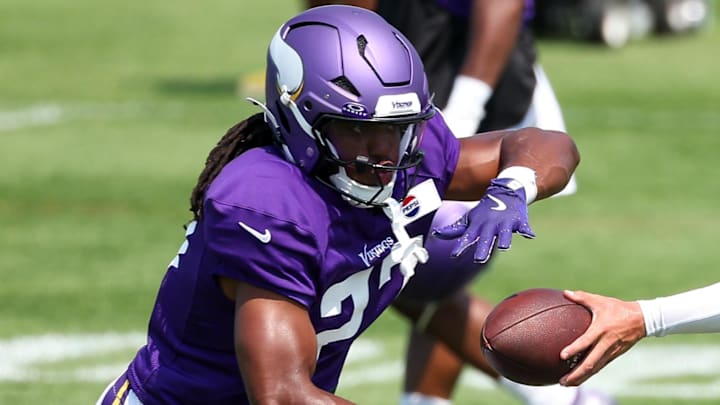After a dismal playoff loss to the Los Angeles Rams last January, Minnesota Vikings head coach Kevin O'Connell foreshadowed a shift in his team's identity toward fortifying the trenches during the coming offseason.
With a first-year starting quarterback in J.J. McCarthy, that meant fortifying the interior of the offensive line. A natural tentacle of that would be a more efficient ground game, which, despite a nice season from Aaron Jones, was an issue last year.
Any conversation about who the Vikings' biggest X-factor is in 2025 begins, and as a practical matter ends, with McCarthy. If he is the kind of quarterback O'Connell thinks he is, they will win a lot of games again this season, and all of his critics will have to eat their words.
But with exactly zero regular-season NFL snaps on his resume before the September 8th opener against the Chicago Bears, we still have to see it.
Underrated X-factor for Minnesota Vikings in 2025 will be critical to the team's success
Cody Benjamin of CBS Sports recently named an underrated X-factor for each NFC North team.
For the Vikings, he went with running back Jordan Mason.
"Everyone and their mother knows J.J. McCarthy is the X factor in Minnesota. But the young quarterback doesn't just have an elite pass-catching tandem to support his regular-season debut.
The Vikings quietly added Mason via trade with the 49ers, plucking San Francisco's top Christian McCaffrey fill-in for what appears to be a meaty role.
Aaron Jones is still the clear starter in the backfield, but coach Kevin O'Connell seems intent on spelling the speedy veteran with Mason's more physical approach. The run game could be pivotal here."
Minnesota surprisingly acquired Mason from the San Francisco 49ers in March and promptly signed him to a two-year contract. He filled in capably for Christian McCaffrey last season before an injury of his own.
Mason averaged 5.2 yards per carry last season, sixth best in the league among running backs. According to Next Gen Stats, he finished third in the league in rushing yards over expected per attempt (1.38), compared to 0.17 RYOE/attempt for Jones.
Mason also faced the second-highest rate (33.3 percent) of stacked boxes (eight or more defenders) last season, while Jones faced a stacked box nearly 50 percent less of the time (18.4 percent).
In short yardage situations (1-3 yards to go) last year, Mason averaged 5.3 yards per carry. Meanwhile, Jones and the Vikings as a team averaged just 2.9 yards per carry in those situations.
As the ying to Jones' yang in what should be a productive backfield tandem, Mason's success will be as important to the Vikings' offense this season as anything this side of McCarthy's performance.
